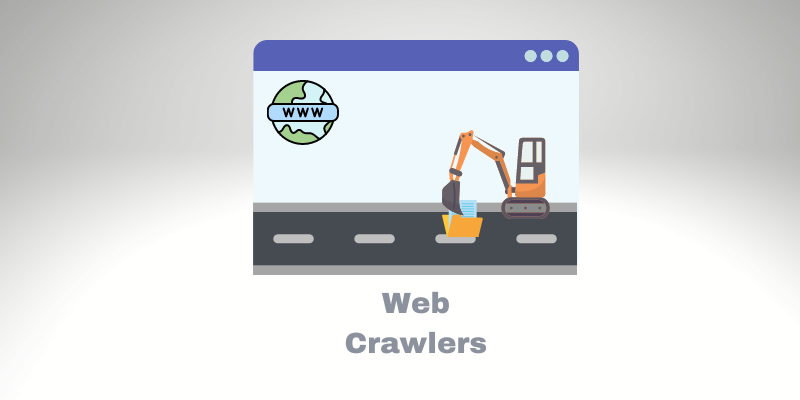Crawler Listing – 12 Most Important Crawlers from the Internet

Crawler Listing—We will discuss crawlers and give you a list of the essential crawlers on the Internet and why we need them.
But first, let’s review some concepts that you may or may not know.
What are crawlers?
A crawler should crawl every page on the Internet at some point to make it available. Without a crawling process, you will never be able to find information on any website.
For example, before this page was indexed on Google, it was crawled by the list of Google servers that hit Bits Lovers and followed each URL.
Also, the process is recursive, which means that for each page (URL), all links inside that page will also be crawled.
You can imagine that this process is costly. But, a critical note about it, it is expensive for both: the website owner and those trying to crawl.
Which kind of web crawler exists?
Private web crawlers are created in-house by someone to crawl their website for diverse goals like – creating sitemaps and crawling the whole website for broken links.
Retail web crawlers are those that you can buy from companies that design such software. In addition, some big companies might have their own custom crawlers.
One prominent example is ahrefs.com, the giant crawler on the internet after Google.
Why the crawler all web pages?
They offer a service for site owners who wish to run an audit on their site so they can optimize their content for SEO. For example, they may be looking for a broken link or finding opportunities to grow their backlink portfolio.
Another example from our crawler listing is the CriteoBot. For instance, if you run Ads on your site, there is some kind of Bot like CriteoBot that retrieves the whole text on your page to identify the best ads that match the context from that specific page. This could help increase the revenue for that website owner.
For example, in the audit process, you can find out which page on your site has more references internally and externally (other sites pointing to you).
Open Source – Crawler List
You can find on the internet several open-source projects, but let’s list the main ones:
Both examples below could be modified by you and adapted according to your needs.
Though these frequently lack advanced characteristics and functionalities of paid alternatives, they deliver the possibility to peek into source code and comprehend how these crawlers perform!
Open Search Server – written using Java, you can use this web crawler to build a search engine or index web content.
Apache Nutch – also can be used to create your search engine and provide features that make it possible to build a highly scalable solution.
Crawler Listing
Our crawler listing will show the significant crawlers on the internet. But there are thousands of crawlers.
1- Googlebot crawls Google websites (like Youtube) to index content for the Google search engine. Also, google created different bots for different proposals. For example, a crawler that hits images is called GoogleBot Image, or for ads, AdsBot.
2—AhrefsBot—AhrefsBot is an extensive Web Crawler that powers the 12 trillion website links into one database for Ahrefs’s online marketing toolset.
3- BingBot – Use the Microsoft search engine.
4- YandexBot – Yandex bot is Yandex’s search engine crawler. Yandex is a Russian Internet company that operates the biggest search engine in Russia and is responsible for 60% market share in that country today.
5—DuckDuckBot—DuckDuckGo (DDG) is a famous search engine that emphasizes shielding searchers’ privacy and bypassing the filter bubble of personalized search results.
6- Baiduspider – crawls websites from Baidu.com
7- Applebot – crawls Apple’s website for updates, etc.
8. Sogou Spider – Sogou Spider belongs to Sogou.com, the most outstanding Chinese search engine founded in 2004.
9. Exabot – Collect and index data from around the world to Exalead’s search engine. Exalead is a search engine based out of France.
10 – CriteoBot – Criteo visits web pages and examines their content to serve relevant ads on them.
11 – PetalBot – Belongs to the Petal search engine.
12. Facebook External Hit (facebookexternalhit) – crawls the HTML of a website or app you share on Facebook. The crawler collects, caches, and shows information regarding the app or website, such as its description, title, and image.
What does each of these crawlers in our list have in common?
The most famous crawlers from the big companies respect a significant rule: Robots.txt.
Almost all websites on the internet contain that file robots.txt at the root of your domain—for example, /robots.txt.
Before crawling any website, the crawler needs to read that file. This file will describe a list of pages that are allowed to scan.
Creating a Web Crawler
Suppose you are looking for information on how to create a web crawler. Then, I will give you some tips.
First, respect the robots.txt file, as we mentioned before. Why?
Most sites are monitored to detect abuse of excessive crawling activities and if you crawled any pages that are explicitly denied on the robots.txt file.
Also, you can’t run a hundred threads (multiple processes in parallel) to speed up and crawl numerous pages simultaneously. So, the risk of being blocked is pretty high.
There are a lot of restrictions on IPs from big data centers. So, for example, if you deploy your crawler using Digital Ocean as your cloud provider, it may be impossible to crawl some websites because some websites block the Public IP ranges from those data centers.
To skip that limitation, you can use one technique to create your reverse proxy using your residential IPs.
Conclusion
Our crawler list contains significant crawlers, but if you are a site owner, you know listing all crawlers out there is impossible.
Visit our Cloud Computing articles.




Comments